The Standing Rock Indian Reservation is about an hour’s drive south of Bismarck, the capital of a state most Americans would be hard-pressed to find on a map, North Dakota. Surrounded by endless fields where farmers grow wheat, barley, and sunflowers, it has found itself in the midst of national news after sending out calls to Stand With Standing Rock in the protests against the Dakota Access Pipeline (DAPL). This has resulted in a flood of individuals eager and willing to help fight the good fight against the completion of a pipeline that many feel tramples Native rights while simultaneously raising serious environmental concerns.
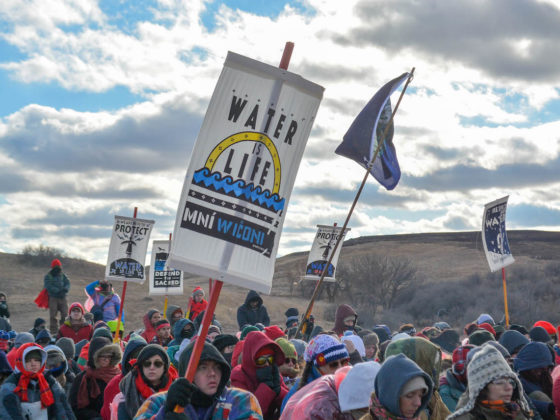

Standing Rock: Don't Just Raise Your Fist, Know the Facts
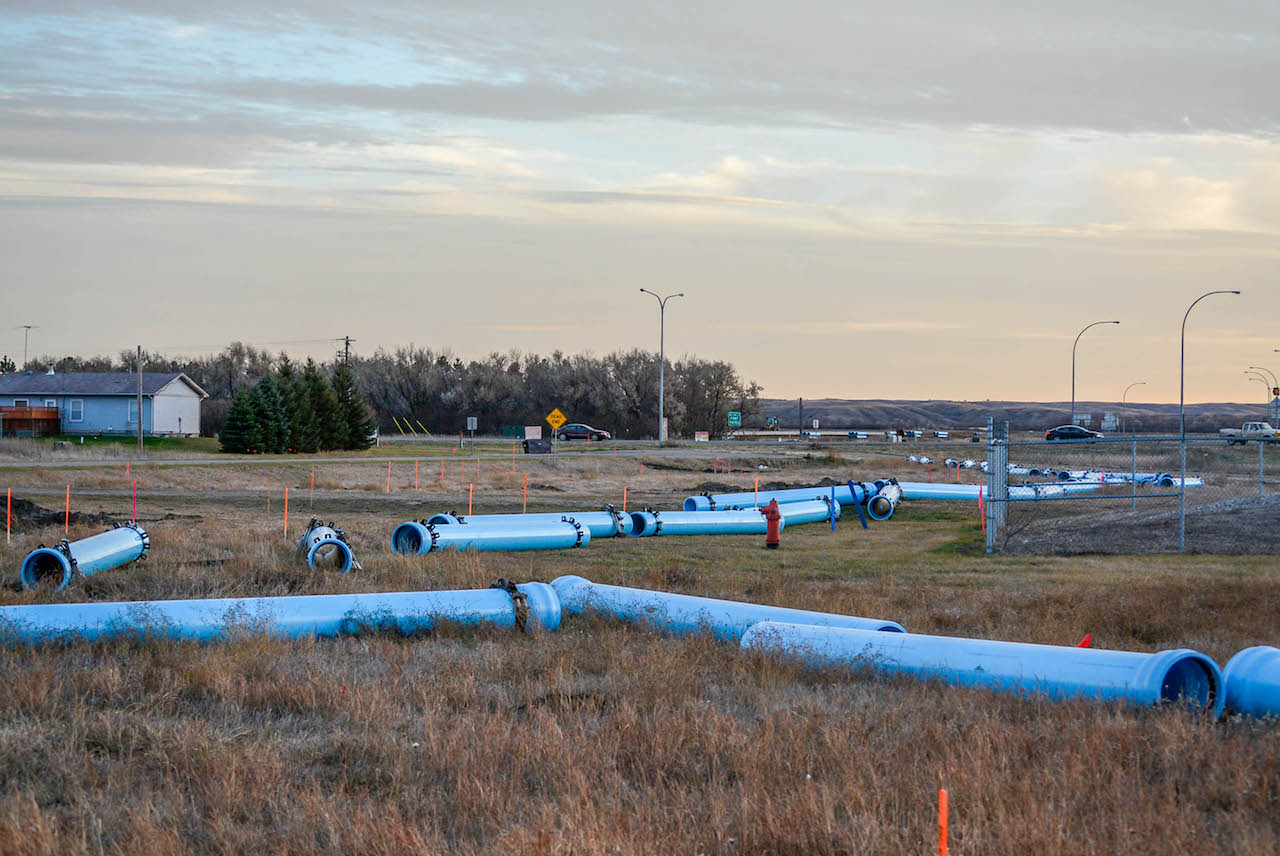
Photo by author
Every new arrival to Oceti Sakowin camp is asked to attend a morning orientation meeting. Here you’re given the rundown on camp happenings: where your labor and donations are most needed, where you are and aren’t allowed to take photographs, what kind of actions are being planned, and how you can help. However, the single most important point addressed at orientation is the need to comport yourself in accordance with Native American traditions. You are asked to be of service to the indigenous-led agenda, and to assist in building a new legacy with the indigenous people.
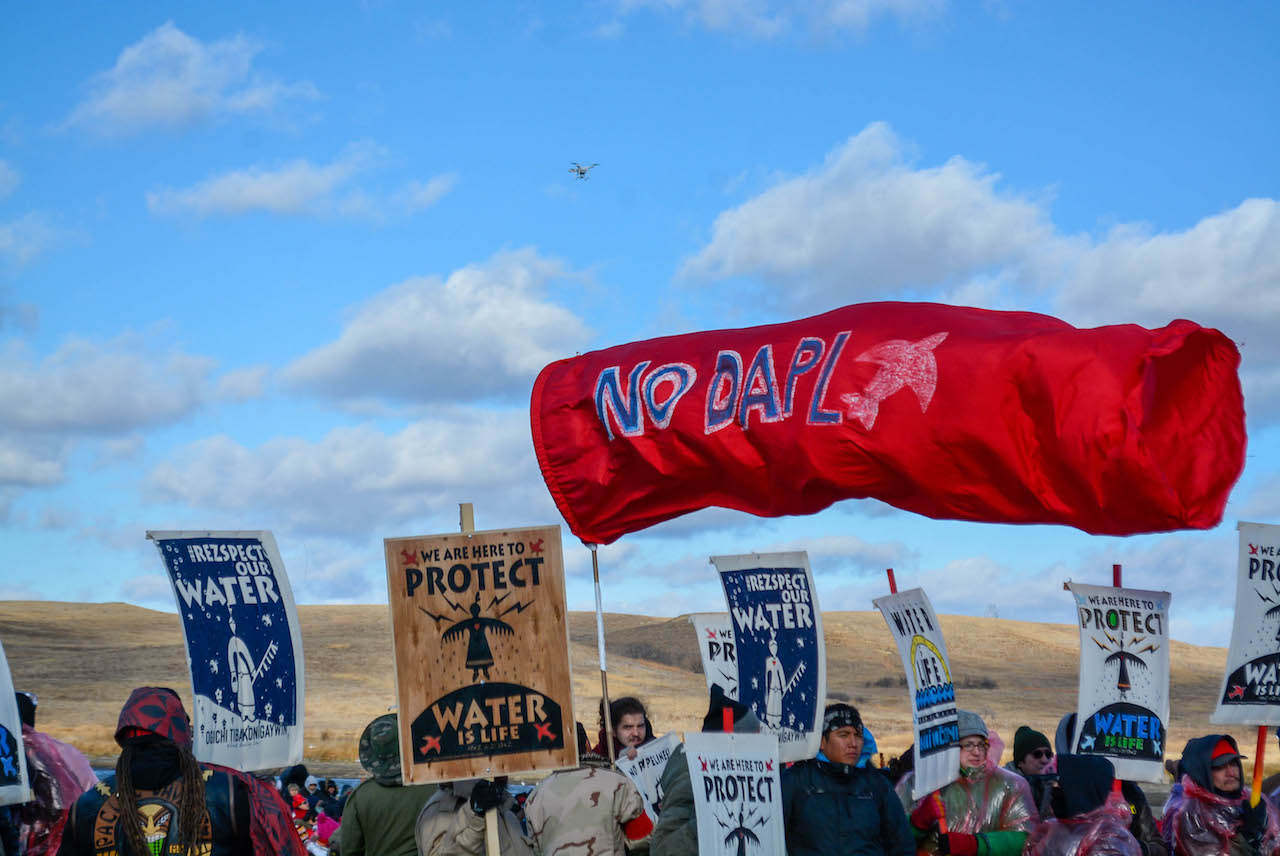
Photo by author
It was a strange request, considering almost everyone at my orientation meeting was of non-native origin, including the two volunteers who led the meeting and subsequent discussions.
They stressed that our experience at Standing Rock would be anything but “linear”; that we could come here seeking answers, but should not expect to find any. To a certain extent, this is reasonable — it’s foolish to think that driving to North Dakota and sleeping in my car for a few nights would provide the answers I need to understand the complicated, nuanced issues surrounding the Standing Rock protests, but it also misses a very important point: that many people need a linear argument to understand why they should care about Standing Rock.
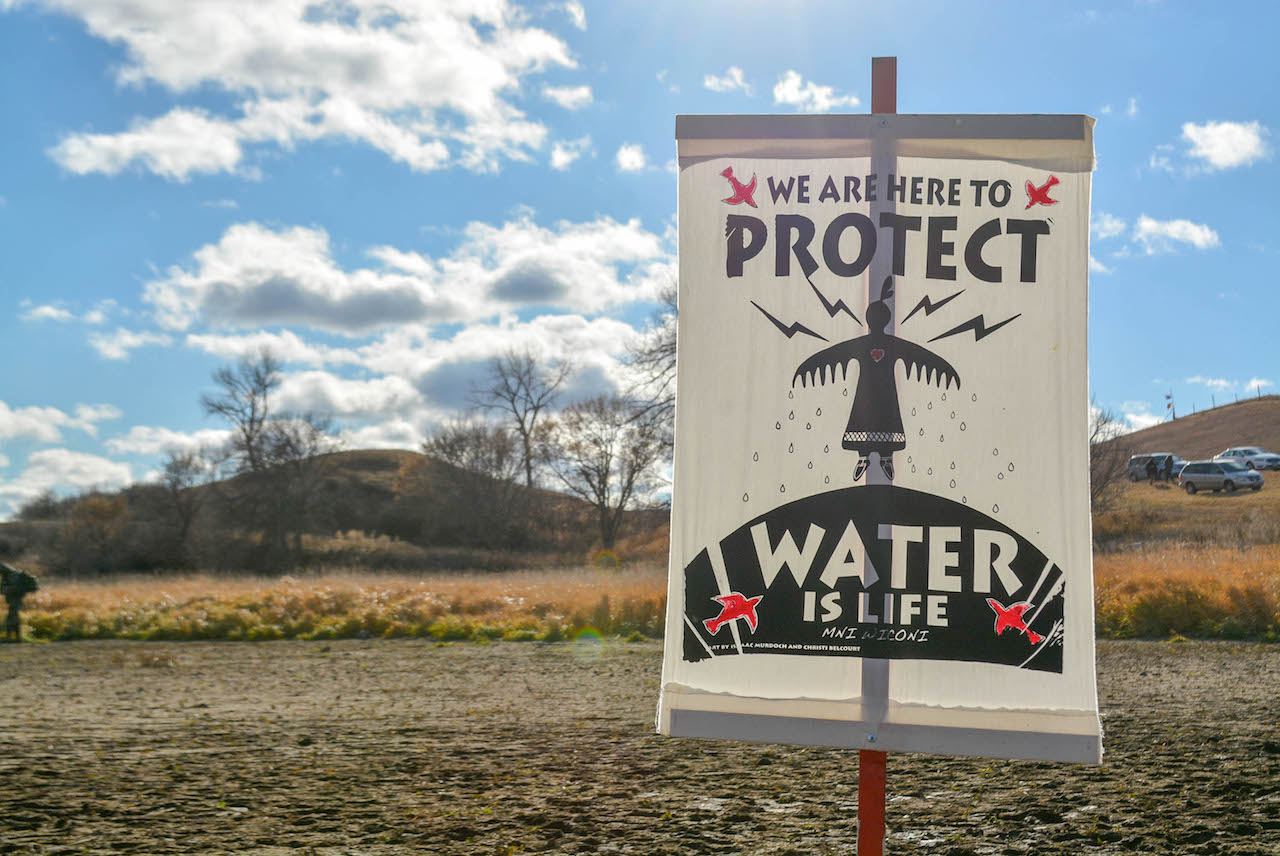
Photo by author
Most demonstrators, or Water Protectors as they call themselves, have existing pre-existing convictions. They have come to Standing Rock because of entrenched beliefs about native rights, the drilling & transport of oil, and government protection of private companies. But if you are only on-the-fence about this whole DAPL thing, and you need to gather more information to understand just why everyone is so riled up, and why you should care, then you need some linear answers. Simple discontent is not a convincing reason to protest.
The people camped out up at Standing Rock are the diehards — those willing to brave the winter, to be arrested for the cause, and to leave behind whatever commitments they have at home in order to protest the completion of the DAPL.
But what about the people at home, seeing all their friends hashtagging #NoDAPL, and with no real idea about what the conflict at Standing Rock is about? How are they supposed to make an informed decision about these issues? Should they just jump on the train, share a few Facebook posts, and open themselves up to accusations of slacktivism? Where can they go to find concrete information about what this protest advocates, and the hard facts as to why they should take a stand?
Sometimes, you need to present your argument in a neat little package in order to make it convincing; a neat package is the foundation of our society. A neat package is what makes insurance policies marketable, and the stock market tick. A neat package is what makes laws predictable, and contracts enforceable. A neat package makes these things possible because it provides concrete information on which reasonable conclusions can be based.
Stressing that you will not find clear answers here is a disservice to all who came here in support of the Standing Rock Sioux. Yes, it’s foolish to expect that I should come to Standing Rock, camp out for a night, attend a morning meeting, and suddenly understand the intricacies of such deep conflict. Yet there are many clear-cut facts here that are simply not being presented. Oceti Sakowin is a prayer camp, established by the Natives. It’s made very, very clear at every juncture that non-native peoples are the guests of the Lakota, are here on their land at their pleasing, and must respect their laws and customs. Fellow protectors are standing in solidarity with them as they are once again oppressed, and must adhere to their agenda of protest.
However, it’s useful to know that while the land I was camped out on technically belongs to the Standing Rock Sioux (according to the Fort Laramie Treaty of 1851), that it’s actually federal land being leased by the Army Corps of Engineers to the Standing Rock Sioux for the express purpose of these protests. That information is crucial, because otherwise you wouldn’t understand how the Army Corps of Engineers could “evict” the Water Protectors from that very land, on December 5.
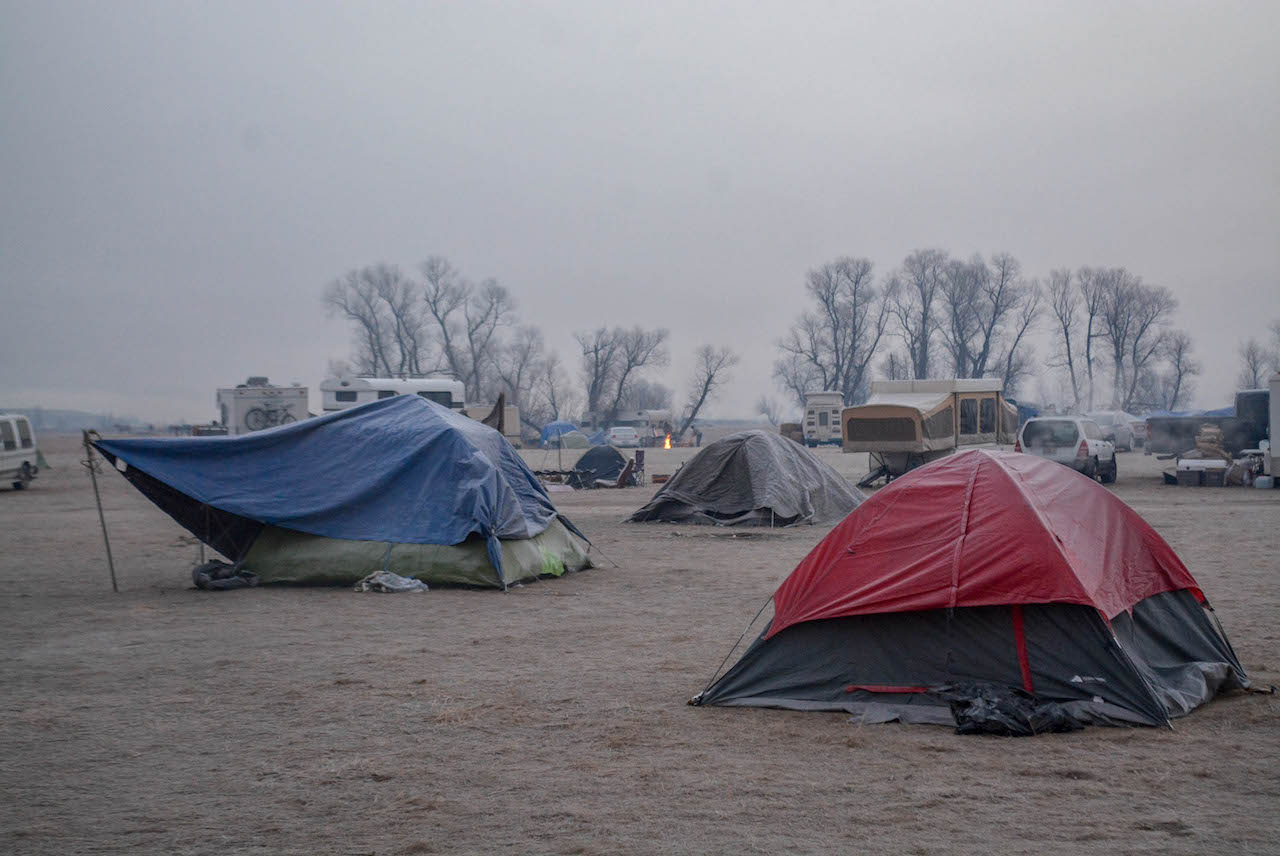
Photo by author
Oceti Sakowin has a surprising degree of organization considering that there is no single governing body in charge of setting times and agendas for orientation, meals, prayer, direct action training, or construction projects, but what the camp lacks is a context for what is actually happening here. There are pamphlets detailing your civil liberties — what to do if you are approached, detained, or arrested by an officer of the law, but there is no context for why you should risk being approached, detained, or arrested by an officer of the law. There is no readily available information as to why the Standing Rock Sioux, and with them hundreds of protesters are gathered here other than to simply oppose the completion of a controversial pipeline.
I came here looking for answers to simple questions: are you more annoyed about the federal government trampling on your tribal rights, or about the environmental impact of a possible spill? Do you have any alternative solutions to the DAPL being built in this exact spot across the Missouri River? Seriously, why can’t it just be moved downstream? What, in particular, are you so willing to be arrested for? What eventuality are you so concerned about that you have camped out here, dedicating yourself to the fight against this pipeline? An oil spill, or government overreach?
What I found instead were legions of diehards that felt like they needed to be here in Standing Rock to stand in solidarity with an oppressed group of individuals, but after twenty-four hours, I had yet to find a source of concrete information as to why, in a more legal sense, the DAPL is unjust and should be stopped. Everyone has their own reason for being at Standing Rock, and while it’s easy to take a philosophical stand against Big Oil, that is a war to fight. Standing Rock is a battle within that war, and if you want to win the battle, you need to make a convincing argument for why the opposition is wrong in this instance. That is hard to do when you have an all-too-real dichotomy: those whose convictions are rooted in Native rights, and those whose convictions are rooted in environmental concerns.
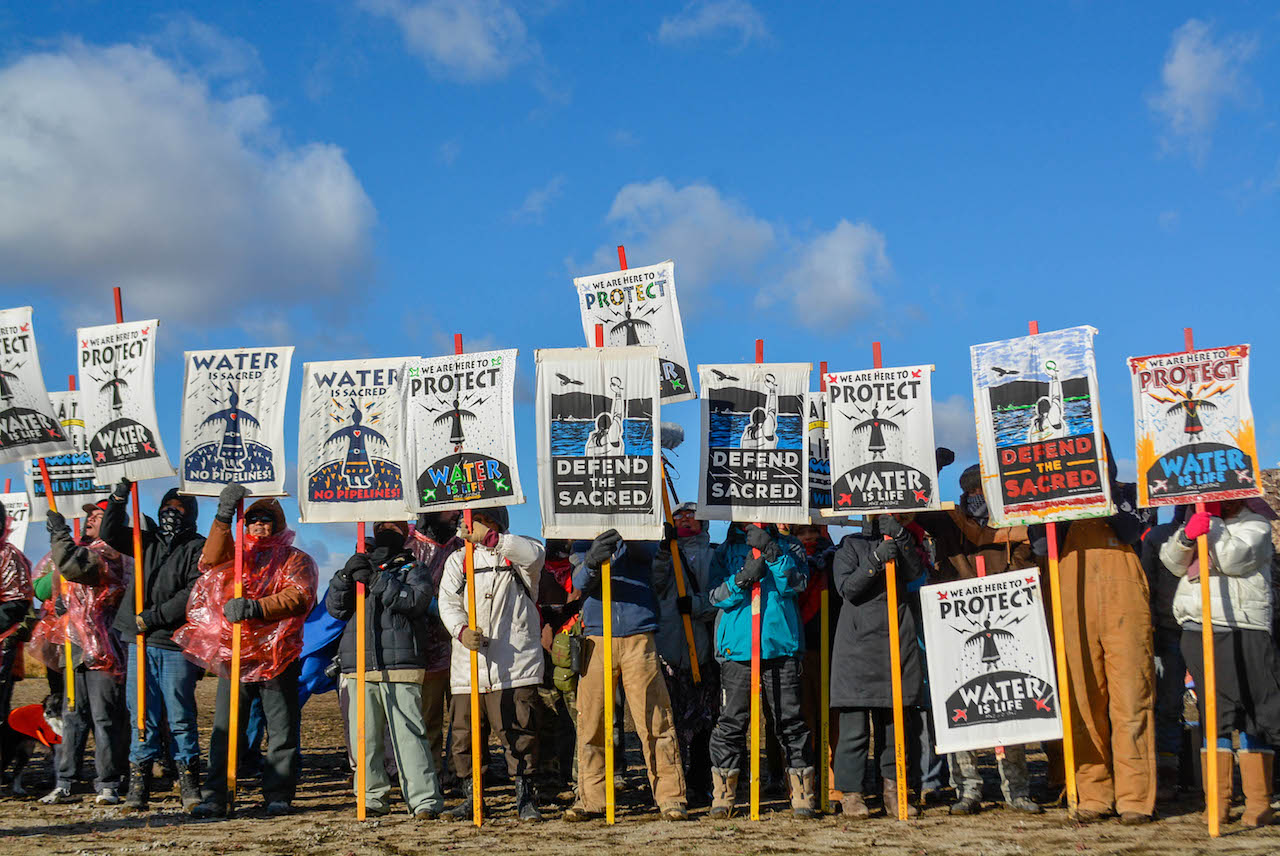
Photo by author
Twenty-four hours around camp, and most of my questions remained unanswered. At orientation I was told time and again to consider the ramifications of my suggestions, and whose resources would eventually be used to put them into action. Perhaps it’s hypocritical of me to suggest that those who show up as boots on the ground should be entitled to contextual information, but I don’t think it’s too much to ask that if you attend training on how to initiate direct, non-violent action (and be prepared to be arrested for it), that some context be provided as to why you’re willing to put your criminal history on the line for this cause — some context other than I oppose the pipeline. Society at large cares about this issue, but they need more than I also oppose the pipeline to truly make a difference.
My first day at Standing Rock only served to deepen my conviction that everyone needs more information as to why the Dakota Access Pipeline has struck such a chord: not only everyone sitting at home, but everyone choosing to spend the first snowfall of the year sleeping in their unheated cars in the middle of the plains of North Dakota. You can’t just go and raise your fists for a cause, you need concrete information so that you know just what you are fighting for.
This story first appeared on Verse America and is republished here with permission.